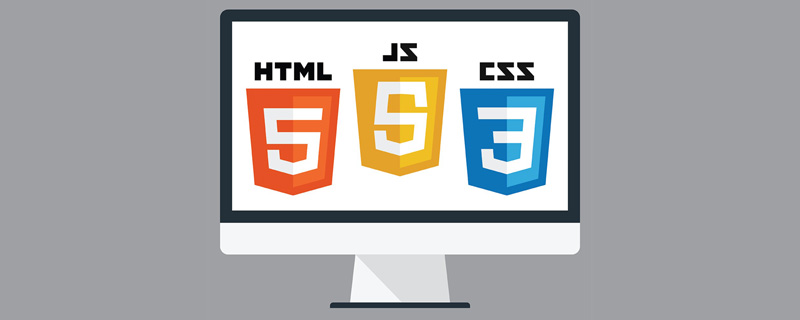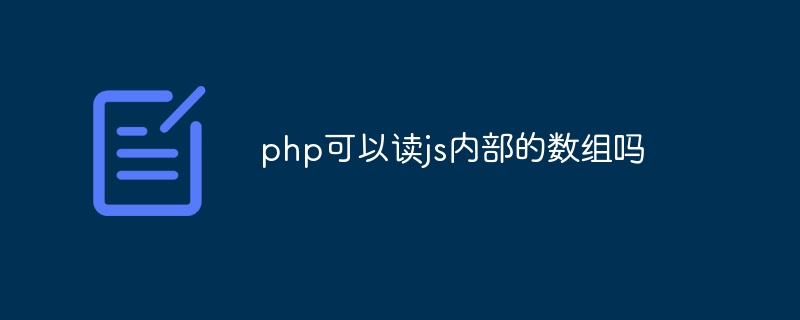Detailed explanation of the principles of several practical cross-domain methods in js
The js cross-domain mentioned here refers to data transmission or communication between different domains through js, such as using ajax to a different domain Request data, or obtain data in frames (iframes) of different domains in the page through js. As long as the protocol, domain name, or port are any different, they are regarded as different domains.
The following table shows the results of homology detection relative to store.company.com/dir/page.html:

To solve the cross-domain problem , we can use the following methods:
1. Cross-domain through jsonp
In js, when we directly use XMLHttpRequest to request data on different domains, it is impossible. However, it is possible to introduce js script files from different domains on the page. jsonp uses this feature to achieve it.
For example, there is an a.html page, and the code in it needs to use ajax to obtain json data on a different domain. Assume that the json data address is http://example.com/data.php, then The code in a.html can be like this:

We see that there is a callback parameter after the address to obtain the data. By convention, this parameter name is used, but if you use Same goes for everything else. Of course, if the jsonp address page for obtaining data is not under your control, you must operate in accordance with the format specified by the party that provides the data.
Because it is introduced as a js file, http://example.com/data.php must return an executable js file, so the php code of this page may be like this:

The final output result of that page is:

So through http://example.com/data. The js file obtained by php?callback=dosomething is the dosomething function we defined before, and its parameters are the json data we need, so that we can obtain the data we need across domains.
In this way, the principle of jsonp is very clear. A js file is introduced through the script tag. After the js file is successfully loaded, it will execute the function we specified in the url parameter, and will use the json data we need as Parameters are passed in. Therefore, jsonp requires corresponding cooperation from the server-side page.
After knowing the principle of jsonp cross-domain, we can use js to dynamically generate script tags for cross-domain operations without having to manually write those script tags. If your page uses jquery, you can easily perform jsonp operations through its encapsulated method.

The principle is the same, except that we don’t need to manually insert script tags and define callback functions. jquery will automatically generate a global function to replace the question mark in callback=?, and then automatically destroy it after obtaining the data. In fact, it acts as a temporary proxy function. The $.getJSON method will automatically determine whether it is cross-domain. If it is not cross-domain, it will call the ordinary ajax method; if it is cross-domain, it will call the jsonp callback function in the form of asynchronously loading the js file.
2. Cross subdomains by modifying document.domain
Browsers all have a same-origin policy, and one of its limitations is what we said in the first method You cannot request documents from different sources through the ajax method. Its second limitation is that js cannot interact between frames in different domains in the browser. One thing that needs to be explained is that different frameworks (father and son or peers) can obtain each other's window objects, but the annoying thing is that you cannot use the properties and methods of the obtained window objects (the postMessage method in HTML5 is an exception, and some browsers such as ie6 can also use a few attributes such as top and parent). In short, you can think of it as only getting an almost useless window object. For example, there is a page whose address is http://www.example.com/a.html , There is an iframe in this page, and its src is http://example.com/b.html. Obviously, this page and the iframe in it are in different domains, so we cannot write in the page. js code to get things in iframe:

At this time, document.domain can come in handy. We only need to add http://www.example.com/a.html and Just set the document.domain of the two pages http://example.com/b.html to the same domain name. But it should be noted that the setting of document.domain is limited. We can only set document.domain to itself or a higher-level parent domain, and the main domain must be the same. For example: document.domain of a document in a.b.example.com can be set to a.b.example.com, b.example.com , example.com, but it cannot be set to c.a.b.example.com, because this is a subdomain of the current domain, nor can it be set to baidu.com, because the main domain is no longer the same.
Set document.domain in the page http://www.example.com/a.html:

In the page http://example. Document.domain is also set in com/b.html, and this is also necessary. Although the domain of this document is example.com, the value of document.domain must be set explicitly:

In this way we can access various properties and objects in the iframe through js.
But if you want to directly request the example.com/b.html page through ajax in the www.example.com/a.html page, even if you set the same document.domain, it still won’t work, so The method of modifying document.domain is only applicable to interactions between frames in different subdomains. If you want to interact with pages in different subdomains through the ajax method, in addition to using the jsonp method, you can also use a hidden iframe as a proxy. The principle is to let this iframe load a page in the same domain as the target page you want to get data through ajax, so the page in this iframe can use ajax to get the data you want normally, and then through us The method of modifying document.domain just mentioned allows us to fully control this iframe through js, so that we can let the iframe send an ajax request, and then we can also obtain the received data.
3. Use window.name for cross-domain
The window object has a name attribute, which has a characteristic: that is, in the life of a window (window) During the cycle, all pages loaded by the window share a window.name. Each page has read and write permissions for window.name. Window.name is persisted in all pages loaded by a window. It will not be reset when a new page is loaded.
For example: there is a page a.html, which has this code:

Look at the code of page b.html:

3 seconds after the a.html page is loaded, it jumps to the b.html page. The result is:

Let’s see On the b.html page, the value set for window.name by its previous page a.html was successfully obtained. If window.name is not modified in all subsequent loaded pages, then the value of window.name obtained by all these pages will be the value set by the a.html page. Of course, if necessary, any of the pages can modify the value of window.name. Note that the value of window.name can only be in the form of a string. The maximum size of this string can allow a capacity of about 2M or more, depending on different browsers, but it is generally sufficient.
In the above example, the pages a.html and b.html we used are in the same domain, but even if a.html and b.html are in different domains, the above conclusion is also applicable Yes, this is exactly the principle of using window.name for cross-domain.
Let’s take a look at how to obtain data across domains through window.name. Or give an example.
For example, if there is a www.example.com/a.html page, you need to use the js in the a.html page to get another page www.cnblogs.com/data.html located on a different domain. data.
The code in the data.html page is very simple, it is to set a data value that the a.html page wants to get for the current window.name. Code in data.html:

So in the a.html page, how do we load the data.html page? Obviously we cannot directly load the data.html page by changing the window.location in the a.html page, because we want to get the data in data.html even if the a.html page does not jump. The answer is to use a hidden iframe in the a.html page to act as a middleman. The iframe gets the data from data.html, and then a.html gets the data from the iframe.
If the iframe acting as a middleman wants to obtain the data set by window.name in data.html, it only needs to set the src of this iframe to www.cnblogs.com/data.html. Then if a.html wants to get the data obtained by the iframe, that is, if it wants to get the value of the window.name of the iframe, it must also set the src of the iframe to the same domain as the a.html page. Otherwise, according to the previous Regarding the same-origin policy, a.html cannot access the window.name attribute in the iframe. This is the entire cross-domain process.
Look at the code of the a.html page:

The above code is just the simplest principle demonstration code. You can use js to encapsulate the above process. , such as dynamically creating iframes, dynamically registering various events, etc. Of course, for security reasons, after obtaining the data, you can also destroy the iframe as a proxy. There are many similar ready-made codes on the Internet. If you are interested, you can look for them.
This is how cross-domain is done through window.name.
4. Use the window.postMessage method newly introduced in HTML5 to transmit data across domains.
window.postMessage(message,targetOrigin) method is a newly introduced feature of HTML5 , you can use it to send messages to other window objects, regardless of whether the window object belongs to the same source or different sources. Currently, IE8+, FireFox, Chrome, Opera and other browsers already support the window.postMessage method.
The window object calling the postMessage method refers to the window object to receive the message. The first parameter message of this method is the message to be sent, and the type can only be a string; the second parameter targetOrigin is used To limit the domain of the window object that receives the message, if you don’t want to limit the domain, you can use the wildcard *.
The window object that needs to receive the message can obtain the passed message by monitoring its own message event. The message content is stored in the data attribute of the event object.
Sending messages to other window objects mentioned above actually refers to the situation where a page has several frames, because each frame has a window object. When discussing the second method, we said that frameworks in different domains can obtain each other's window objects, and they can also use the window.postMessage method. Let’s look at a simple example with two pages


The result we get after running page a:

We see that page b successfully received the message.
Using postMessage to transmit data across domains is relatively intuitive and convenient, but the disadvantage is that IE6 and IE7 do not support it, so whether to use it or not depends on actual needs.
Conclusion:
In addition to the above methods, there are also cross-domain methods such as flash and setting up proxy pages on the server, which will not be introduced here.
The above four methods can be selected and applied according to the actual situation of the project. I personally think that the window.name method is not complicated and can be compatible with almost all browsers. This is really an excellent cross-browser method. domain methods.
The above is the detailed content of Detailed explanation of 4 practical cross-domain methods in js. For more information, please follow other related articles on the PHP Chinese website!
 如何使用JS和百度地图实现地图平移功能Nov 21, 2023 am 10:00 AM
如何使用JS和百度地图实现地图平移功能Nov 21, 2023 am 10:00 AM如何使用JS和百度地图实现地图平移功能百度地图是一款广泛使用的地图服务平台,在Web开发中经常用于展示地理信息、定位等功能。本文将介绍如何使用JS和百度地图API实现地图平移功能,并提供具体的代码示例。一、准备工作使用百度地图API前,首先需要在百度地图开放平台(http://lbsyun.baidu.com/)上申请一个开发者账号,并创建一个应用。创建完成
 js字符串转数组Aug 03, 2023 pm 01:34 PM
js字符串转数组Aug 03, 2023 pm 01:34 PMjs字符串转数组的方法:1、使用“split()”方法,可以根据指定的分隔符将字符串分割成数组元素;2、使用“Array.from()”方法,可以将可迭代对象或类数组对象转换成真正的数组;3、使用for循环遍历,将每个字符依次添加到数组中;4、使用“Array.split()”方法,通过调用“Array.prototype.forEach()”将一个字符串拆分成数组的快捷方式。
 如何使用JS和百度地图实现地图多边形绘制功能Nov 21, 2023 am 10:53 AM
如何使用JS和百度地图实现地图多边形绘制功能Nov 21, 2023 am 10:53 AM如何使用JS和百度地图实现地图多边形绘制功能在现代网页开发中,地图应用已经成为常见的功能之一。而地图上绘制多边形,可以帮助我们将特定区域进行标记,方便用户进行查看和分析。本文将介绍如何使用JS和百度地图API实现地图多边形绘制功能,并提供具体的代码示例。首先,我们需要引入百度地图API。可以利用以下代码在HTML文件中导入百度地图API的JavaScript
 如何使用JS和百度地图实现地图热力图功能Nov 21, 2023 am 09:33 AM
如何使用JS和百度地图实现地图热力图功能Nov 21, 2023 am 09:33 AM如何使用JS和百度地图实现地图热力图功能简介:随着互联网和移动设备的迅速发展,地图成为了一种普遍的应用场景。而热力图作为一种可视化的展示方式,能够帮助我们更直观地了解数据的分布情况。本文将介绍如何使用JS和百度地图API来实现地图热力图的功能,并提供具体的代码示例。准备工作:在开始之前,你需要准备以下事项:一个百度开发者账号,并创建一个应用,获取到相应的AP
 js中new操作符做了哪些事情Nov 13, 2023 pm 04:05 PM
js中new操作符做了哪些事情Nov 13, 2023 pm 04:05 PMjs中new操作符做了:1、创建一个空对象,这个新对象将成为函数的实例;2、将新对象的原型链接到构造函数的原型对象,这样新对象就可以访问构造函数原型对象中定义的属性和方法;3、将构造函数的作用域赋给新对象,这样新对象就可以通过this关键字来引用构造函数中的属性和方法;4、执行构造函数中的代码,构造函数中的代码将用于初始化新对象的属性和方法;5、如果构造函数中没有返回等等。
 用JavaScript模拟实现打字小游戏!Aug 07, 2022 am 10:34 AM
用JavaScript模拟实现打字小游戏!Aug 07, 2022 am 10:34 AM这篇文章主要为大家详细介绍了js实现打字小游戏,文中示例代码介绍的非常详细,具有一定的参考价值,感兴趣的小伙伴们可以参考一下。
 php可以读js内部的数组吗Jul 12, 2023 pm 03:41 PM
php可以读js内部的数组吗Jul 12, 2023 pm 03:41 PMphp在特定情况下可以读js内部的数组。其方法是:1、在JavaScript中,创建一个包含需要传递给PHP的数组的变量;2、使用Ajax技术将该数组发送给PHP脚本。可以使用原生的JavaScript代码或者使用基于Ajax的JavaScript库如jQuery等;3、在PHP脚本中,接收传递过来的数组数据,并进行相应的处理即可。
 js是什么编程语言?May 05, 2019 am 10:22 AM
js是什么编程语言?May 05, 2019 am 10:22 AMjs全称JavaScript,是一种具有函数优先的轻量级,直译式、解释型或即时编译型的高级编程语言,是一种属于网络的高级脚本语言;JavaScript基于原型编程、多范式的动态脚本语言,并且支持面向对象、命令式和声明式,如函数式编程。


Hot AI Tools

Undresser.AI Undress
AI-powered app for creating realistic nude photos

AI Clothes Remover
Online AI tool for removing clothes from photos.

Undress AI Tool
Undress images for free

Clothoff.io
AI clothes remover

AI Hentai Generator
Generate AI Hentai for free.

Hot Article

Hot Tools

Atom editor mac version download
The most popular open source editor

mPDF
mPDF is a PHP library that can generate PDF files from UTF-8 encoded HTML. The original author, Ian Back, wrote mPDF to output PDF files "on the fly" from his website and handle different languages. It is slower than original scripts like HTML2FPDF and produces larger files when using Unicode fonts, but supports CSS styles etc. and has a lot of enhancements. Supports almost all languages, including RTL (Arabic and Hebrew) and CJK (Chinese, Japanese and Korean). Supports nested block-level elements (such as P, DIV),

SublimeText3 Linux new version
SublimeText3 Linux latest version

VSCode Windows 64-bit Download
A free and powerful IDE editor launched by Microsoft

ZendStudio 13.5.1 Mac
Powerful PHP integrated development environment







